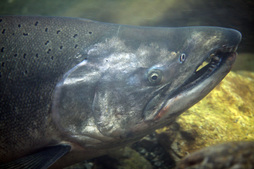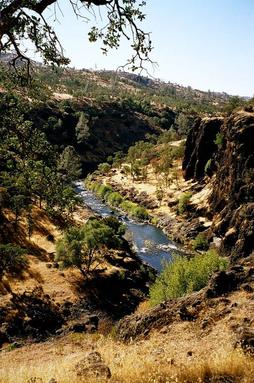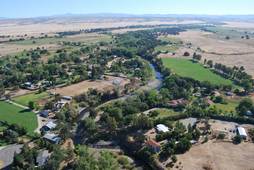The Nature Conservancy



The Bottleneck for Fish Passage
Excellent spawning and rearing conditions exist upstream in the Mill Creek Canyon. However, a major threat to Mill Creek salmon runs is the dewatering of the lower 5.5 miles of the stream for local irrigation. The existing system for providing environmental flows for salmon migration on Mill Creek is effective in wet years, but inadequate in drier years.
The Water Exchange Agreement
The Nature Conservancy purchased two water rights on Mill Creek totaling 17.9 cubic feet per second (cfs). This voluntary agreement exchanges the use of those water rights during the summer irrigation season for an equal amount of water for salmon and steelhead passage in the spring and fall from the Los Molinos Mutual Water Company. The Nature Conservancy water will be left instream each year until July 1 and after October 14 for ecological benefit. Los Molinos Mutual Water Company will have the right to divert the The Nature Conservancy water for irrigation from July 1 through October 14. In return for the summer use of our water, Los Molinos Mutual Water Company will provide an additional flow of 24 cfs when flow calls are made by the California Department of Fish and Wildlife for fish passage flows.
This passage flow will be in the form of two to three day pulse flows in the spring and continuous flows in the fall. The 24 cfs figure was based on a historical analysis of irrigation and fish passage needs on Mill Creek. The 24 cfs flow is projected to result in a long-term, average balance in the water exchanged between Los Molinos Mutual Water Company and The Nature Conservancy. The exchange is for an initial five-year term with provisions for adaptive management to adjust to changing or unforeseen circumstances and for extension in the future.
A Win/Win for Fish Passage Flows and Irrigation Water
The voluntary water exchange is a “win / win” deal. Los Molinos Mutual Water Company shareholders will have the use of The Nature Conservancy’s water rights during the summer months when irrigation demand is greatest, an increase of approximately 13% more water for them. Instream flows will, in exchange, be increased in the spring and fall when additional water is needed for salmon and steelhead passage in the valley reach of Mill Creek.
More Flow Improvements Still to Come
While we are still short of adequate and assured instream flows for salmon and steelhead we are making significant progress through the Mill Creek Flows Group, which brings local interests, resource agencies and NGO’s together to develop solutions for salmon and for people. The Flows Group is pursuing four tools to increase instream flow for salmon and steelhead:
- Additional conjunctive use wells to supplement Mill Creek flows at critical times
- Additional water rights with exchange agreements to share water in time
- Irrigation system efficiency improvements to reduce irrigation demand
- Offstream storage to increase irrigation system flexibility
As we move forward to implement these four tools we can realistically anticipate achieving long-term adequate and assured instream flows for salmon and steelhead while still maintaining irrigation to support the agricultural economy and culture of the Los Molinos area.
For more information, contact Gregg Werner, TNC Senior Project Director, at gwerner@tnc.org.